Nandyal projects
Nandyal is about 20 sq Km in size with a population of 2 Lakhs in the Kurnool District in the North West of Andhra Pradesh.
Nandyal is about 20 sq Km in size with a population of 2 Lakhs in the Kurnool District in the North West of Andhra Pradesh.

Severe acute malnutrition is a major cause of death in children under 5, and its prevention and treatment are critical to child survival and development. It is characterized.
When we first me Siya, she was suffering from Severe Acute Malnutrition and we found that her weight at birth was just 1.3 Kgs.
Siya became a part of our Nutrition project in Roha, Raigad Supported By
Sudarshan Chemicals and the CSR cell where we adopted 6 Anganwadis
centers to improve the nutrition status of children.
The children were given a different Micronutrient Fortified Ladoo each
day, these are Ragi, Soya, and Wheat. Each Ladoo has an average energy of
245 Kcals and provides about 5.3 gms of protein to the child.
We were glad to note that Siya has shown improvement and is not
suffering from Severe Acute Malnutrition Anymore. In me we expect her
to move on to becoming a completely Normal and Happy Child.
| Month | Apr | May | Jun | July | Aug | Sep | Oct |
|---|---|---|---|---|---|---|---|
| Weights (kg) | 8.8 | 9.0 | 9.2 | 9.3 | 9.5 | 9.6 | 9.8 |
| Heights (cm) | 64 | 64 | 64.7 |
Proper nutrition plays a critical role in the overall health and well-being of children. During early life, nutrition has the most significant impact on their growth, development, and long-term health. By providing children with a balanced diet rich in essential nutrients, we can set the stage for a lifetime of good health. In this article, we will explore the connection between proper nutrition and lifelong health, understand the key nutrients required for optimal child health, and delve into the lifelong impacts of proper nutrition on child health.

A. The Importance of Early Nutrition
Proper nutrition in the early years of life is crucial as it provides the necessary building blocks for growth and development. During this period, the brain, immune system, bones, and vital organs undergo significant development. A well-balanced diet during this time ensures that children receive the necessary nutrients they need to support these processes.
B. The Connection Between Proper Nutrition and Lifelong Health
Proper nutrition in the early years of life is crucial as it provides the necessary building blocks for growth and development. During this period, the brain, immune system, bones, and vital organs undergo significant development. A well-balanced diet during this time ensures that children receive the necessary nutrients they need to support these processes.
C. Setting the Stage for Lifelong Well-being
Proper nutrition early in life not only promotes physical growth but also sets the stage for lifelong well-being. It helps in establishing healthy eating habits, boosts cognitive development, and strengthens the immune system. By nourishing children with the right nutrients during their early years, we can empower them to lead healthy and fulfilling lives.
A. Essential Vitamins for Growth and Development
1. Vitamin A: Supporting Healthy Vision and Immunity
Vitamin A is crucial for maintaining healthy vision and supporting the immune system. It promotes the proper functioning of the eyes and helps prevent night blindness. Additionally, Vitamin A plays a vital role in enhancing immunity, protecting children from various infections and diseases.
2. Vitamin D: Promoting Strong Bones and Overall Health
Vitamin D is essential for the absorption of calcium, which is critical for the development of strong and healthy bones. It also plays a role in promoting overall health by supporting the immune system and reducing the risk of chronic diseases.
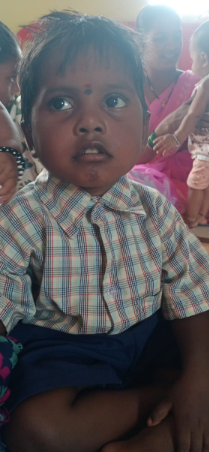
3. Vitamin C: Boosting Immune Function and Wound Healing
Vitamin C is well-known for its immune-boosting properties. It helps protect against infections, aids in wound healing, and supports the body’s natural defense mechanisms. Adequate Vitamin C intake is essential for optimal child health and well-being.
B. Crucial Minerals for Cognitive and Physical Development
1. Iron: Fuelling Brain Function and Preventing Anemia
Iron is crucial for proper brain function, as it helps carry oxygen to the brain cells. It also plays a significant role in preventing iron deficiency anemia, a condition that can have long-term effects on cognitive function and physical development.
2. Calcium: Building Strong Bones and Teeth
Calcium is essential for the development of strong bones and teeth. It is particularly important during childhood when bones are growing rapidly. Adequate calcium intake ensures optimal bone health and reduces the risk of conditions like osteoporosis later in life.
3. Zinc: Supporting Growth, Immune System, and Wound Healing
Zinc plays a vital role in supporting growth and development, as well as boosting the immune system. It promotes the synthesis of proteins and DNA, aids in wound healing, and helps fight off infections. Adequate zinc intake is necessary for optimal child health.
C. Balancing Macronutrients for Energy and Growth
1. Iron: Fuelling Brain Function and Preventing Anemia
Carbohydrates are the body’s main source of energy. They provide fuel for daily activities, physical growth, and development. Choosing healthy carbohydrates, such as whole grains, fruits, and vegetables, can ensure a steady supply of energy for children.
2. Essential Proteins: Building Blocks for Growth and Repair
Proteins are essential for the growth and repair of body tissues. They provide the building blocks for muscles, organs, and cells. Including adequate protein sources, such as lean meats, poultry, fish, beans, and nuts, in a child’s diet supports optimal growth and development.
3. Healthy Fats: Supporting Brain Development and Nutrient Absorption
Healthy fats, such as omega-3 fatty acids, are crucial for brain development and function. They also play a role in nutrient absorption and hormone production. Including sources of healthy fats, like avocados, nuts, and olive oil, in a child’s diet promotes optimal cognitive function and overall health.
The Lifelong Impacts of Proper Nutrition on Child Health
1. Nutritional Influence on Brain Development and Function
Proper nutrition plays a vital role in brain development and function. Essential nutrients, such as vitamins, minerals, and healthy fats, provide the necessary support for optimal cognitive development. They help in the formation of neural connections, improve memory and concentration, and enhance learning abilities.
2. The Relationship between Proper Nutrition and Cognitive Abilities
Research has shown a strong association between proper nutrition and cognitive abilities in children. Adequate nutrient intake, especially during the early years, has been linked to improved intelligence, enhanced problem-solving skills, and better academic performance.
3. Boosting Academic Success through Nourishment
Proper nutrition sets the stage for academic success. By providing children with the necessary nutrients, parents and caregivers can optimize their cognitive abilities, improve memory and concentration, and enhance overall academic achievement.
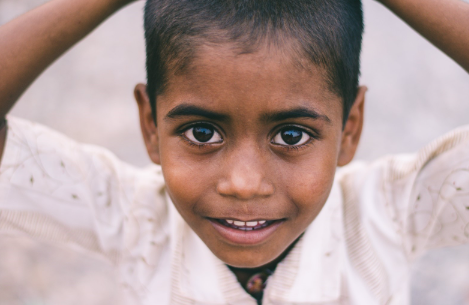
B. Physical Growth and Development
1. Nutritional Influence on Brain Development and Function
Proper nutrition plays a vital role in brain development and function. Essential nutrients, such as vitamins, minerals, and healthy fats, provide the necessary support for optimal cognitive development. They help in the formation of neural connections, improve memory and concentration, and enhance learning abilities.
2. Preventing Stunting and Promoting Growth Milestones
Adequate nutrition is crucial in preventing stunting, a condition characterized by impaired growth and development. Malnutrition during the early years can have long-term effects on a child’s height, limiting their potential. Proper nutrition, on the other hand, ensures that children achieve important growth milestones.
3. Building Strong Immunity to Fight Diseases
Proper nutrition strengthens the immune system, equipping children with the tools to fight off infections and diseases. Essential nutrients, such as vitamins and minerals, support the development and functioning of the immune system, reducing the risk of illnesses and promoting overall health.
C. Mitigating the Risk of Chronic Diseases in Adulthood
1. Early Nutrition's Impact on Reducing Chronic Disease Risk
Proper nutrition during childhood has a significant impact on the risk of chronic diseases in adulthood. Research has shown that a diet rich in fruits, vegetables, whole grains, and lean proteins can reduce the risk of conditions like cardiovascular disease, diabetes, and certain types of cancer.
2. The Role of Childhood Nutrition in Preventing Obesity
Childhood nutrition plays a crucial role in preventing obesity, a condition associated with an increased risk of chronic diseases. A balanced diet, combined with regular physical activity, helps children maintain a healthy weight and reduces the likelihood of obesity-related health issues.
3. Establishing Lifelong Healthy Eating Habits
Early exposure to a variety of nutritious foods sets the stage for lifelong healthy eating habits. By introducing children to a wide range of fruits, vegetables, whole grains, and lean proteins, parents and caregivers can instill a love for nutritious foods and promote a balanced approach to eating.
A. The Role of Parents and Caregivers
1. Creating a Nourishing Environment at Home
Parents and caregivers play a crucial role in creating a nourishing environment at home. This includes providing healthy food choices, promoting regular family meals, and involving children in grocery shopping and meal preparation.
2. The Power of Positive Role Modeling
Positive role modeling is a powerful tool in encouraging healthy eating habits. By modeling healthy eating behaviors themselves, parents and caregivers can influence children to make nutritious choices and develop a positive relationship with food.
3. Practical Strategies for Encouraging Healthy Food Choices
Practical strategies, such as offering a variety of nutritious foods, involving children in meal planning, and making mealtimes enjoyable, can encourage healthy food choices. It is important to create a positive and supportive environment that promotes nutritious eating habits.
B. School-based Nutrition Programs and Their Significance
1. The Importance of Nutritional Education in Schools
Nutritional education in schools is essential in promoting proper nutrition and healthy eating habits. It helps children understand the importance of nutritious food choices, teaches them how to make informed decisions, and equips them with the knowledge to lead healthy lives.
2. School Lunch Programs and Their Impact on Child Health
School lunch programs play a significant role in ensuring children have access to nutritious meals. These programs aim to provide balanced meals that meet the nutritional needs of children, contributing to their overall health and well-being.
3. Collaborative Efforts for Ensuring Nutritious Environments
Collaborative efforts involving parents, caregivers, schools, and communities are crucial in creating and maintaining nutritious environments for children. By working together, we can ensure that children have access to healthy food options both at home and in schools.
1. The Importance of Nutritional Education in Schools
Nutritional education in schools is essential in promoting proper nutrition and healthy eating habits. It helps children understand the importance of nutritious food choices, teaches them how to make informed decisions, and equips them with the knowledge to lead healthy lives.
2. Community Initiatives Promoting Affordable and Healthy Food Options
Community initiatives that promote affordable and healthy food options can play a crucial role in improving nutrition access. Farmers’ markets, community gardens, and partnerships with local growers can help make nutritious foods more accessible and affordable for families.
3. Policy Interventions to Bridge the Nutrition Gap
Policy interventions at the local, regional, and national levels are necessary to bridge the nutrition gap and address disparities in access to nutritious food. These can include initiatives like food labeling regulations, school nutrition standards, and public health campaigns promoting healthy eating habits.
A. The Long-term Benefits of Proper Nutrition on Child Health
Proper nutrition in childhood has long-term benefits that extend into adulthood. By providing children with a well-balanced diet rich in essential nutrients, we can set them up for a lifetime of good health. From cognitive development to physical growth, proper nutrition lays the foundation for overall well-being.
B. Empowering Children for a Healthy Future
Proper nutrition empowers children to take control of their health and make informed decisions about their diet. By instilling healthy eating habits and providing access to nutritious foods, we can equip children with the tools they need to lead healthy and fulfilling lives.
C. The Lifelong Health Impacts of Child Malnutrition
Childhood is a critical period of growth and development, laying the foundation for lifelong health and well-being. Yet, for millions of children around the world, malnutrition casts a long shadow over their future prospects. In remote and marginalized communities, where resources are scarce and access to healthcare is limited, the impacts of child malnutrition are particularly devastating. Let’s delve into the lifelong health consequences of this pressing issue.
**Maternal & Child Mortality: A Grim Reality**
Malnutrition increases the risk of maternal and child mortality, robbing families of their loved ones and perpetuating cycles of grief and hardship. According to the World Health Organization (WHO), malnutrition contributes to nearly half of all deaths in children under the age of five globally, making it a leading cause of mortality in this vulnerable age group.
**Anemia: The Silent Threat**
Both maternal and child anemia are common consequences of malnutrition, with far-reaching implications for health. Anemia in pregnant women increases the risk of maternal mortality and complications during childbirth. For children, anemia can impair cognitive development, weaken immunity, and stunt growth, setting the stage for long-term health challenges.
**Loss of Immunity: A Vulnerable Future**
Malnutrition compromises the immune system, leaving children vulnerable to infections and diseases. This loss of immunity not only increases the likelihood of short-term illnesses but also has long-term implications for overall health. Children who experience recurrent infections during early childhood may face chronic health issues later in life, perpetuating a cycle of illness and vulnerability.
**Hindered Cognitive Development: A Barrier to Success**
Proper nutrition is essential for optimal brain development during childhood. However, malnutrition can hinder cognitive development, impairing learning abilities, and limiting educational attainment. Children who experience malnutrition in early life may struggle academically, earning lower incomes and facing greater barriers to economic and social mobility as adults.
**Stunting and Wasting: Physical Manifestations of Malnutrition**
Stunting and wasting are physical manifestations of malnutrition, reflecting chronic undernutrition and acute food shortages, respectively. These conditions not only impair physical growth but also increase the risk of long-term health problems, including impaired immune function, decreased cognitive abilities, and a heightened susceptibility to chronic diseases later in life.
**Psychological Trauma: Scars that Run Deep**
Malnutrition can also inflict psychological trauma, leaving lasting scars on children’s mental and emotional well-being. The experience of hunger and deprivation during critical developmental stages can lead to anxiety, depression, and other mental health disorders that persist into adulthood, impacting relationships, productivity, and overall quality of life.
In conclusion, the lifelong health impacts of child malnutrition are profound and far-reaching. From maternal and child mortality to impaired cognitive development, stunting, and psychological trauma, malnutrition leaves an indelible mark on individuals and communities. As we strive to build a healthier, more equitable world, addressing the root causes of child malnutrition must remain a top priority, particularly in remote and marginalized communities where the need is greatest. Together, let us work towards a future where every child has the opportunity to thrive, free from the shadow of malnutrition.
It is essential that we take action today to prioritize proper nutrition for children. Whether it’s through creating a nourishing home environment, supporting school-based nutrition programs, or addressing socioeconomic factors, every effort counts in ensuring the lifelong well-being of our children. By investing in their nutrition, we are nurturing their future.
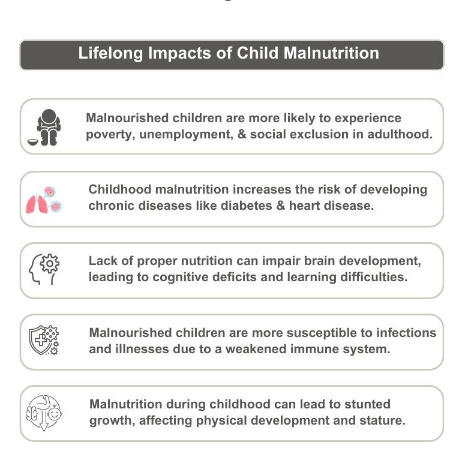
In India, the specter of child malnutrition looms large, casting a long shadow over the future of our nation. The enormity of this issue is not just a matter of statistical analysis but a call to action for everyone.
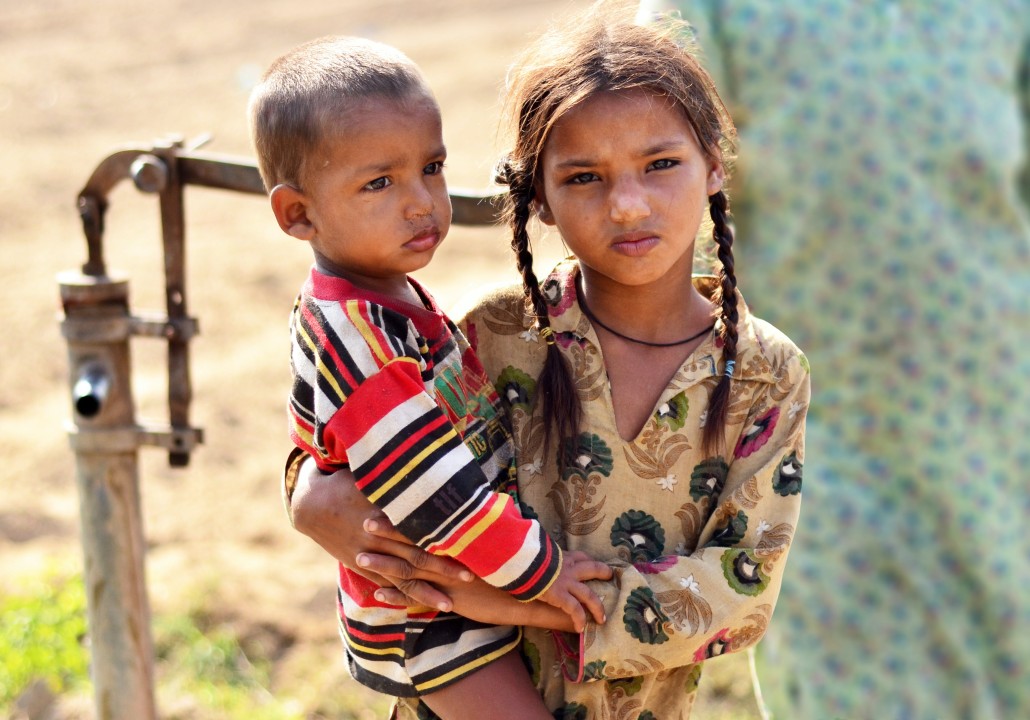
Child malnutrition in India is a complex issue that extends far beyond the mere lack of food. It’s a crisis deeply rooted in various socio-economic factors that collectively contribute to the nutritional deficiencies in children.
Firstly, the socio-economic conditions play a pivotal role. Poverty and low household income directly impact a family’s access to nutritious food. In many cases, even if food is available, it might not meet the necessary dietary requirements for healthy growth in children.
Moreover, impoverished communities often lack the necessary awareness about nutritional needs, leading to a cycle of malnutrition that transcends generations.
Secondly, healthcare access and education are critical components in addressing child malnutrition. Limited access to healthcare means that many children suffer from illnesses that exacerbate nutritional deficiencies, such as diarrheal diseases or worm infestations.
These health issues, often due to poor sanitation and lack of clean water, significantly impact a child’s ability to absorb nutrients. Furthermore, education plays a dual role.

It empowers parents, especially mothers, with knowledge about proper nutrition, essential for making informed dietary choices for their children. Additionally, educated parents are more likely to understand and seek healthcare services, creating a healthier environment for their children.
Environmental sustainability also plays a crucial role. The degradation of the environment, climate change, and loss of biodiversity can lead to food insecurity and affect the availability of diverse and nutritious food.
This challenging aspect points to the need for sustainable agricultural practices and food systems to support the growing population’s nutritional needs, especially for vulnerable children.
The Holistic approach
To deeply understand the holistic approach needed to tackle child malnutrition in India, it’s essential to delve into each aspect of this comprehensive strategy:
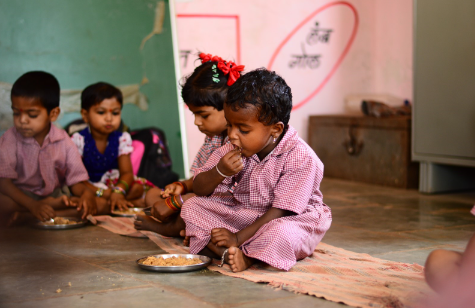
Solutions:
Comprehensive Nutritional Support: Providing food is the first step, but it’s vital to ensure that this food is nutritionally complete. This means a diet that includes all the necessary macronutrients (proteins, fats, carbohydrates) and micronutrients (vitamins and minerals) essential for a child’s growth and development. A balanced diet supports physical health, cognitive development, and disease resistance.
Improving Socio-Economic Conditions: Malnutrition is often a symptom of deeper socio-economic issues. Poor living conditions, lack of income, and unemployment can limit a family’s access to nutritious food. Addressing these conditions requires economic interventions such as job creation, skill development programs, and financial support for impoverished families. Ensuring household economic stability directly contributes to better nutritional choices and food security.
Enhanced Healthcare Access: Regular health check-ups, vaccinations, and medical care are crucial in preventing and treating conditions that can arise from or exacerbate malnutrition, such as infections and parasitic diseases. This also includes maternal healthcare, as the health of a mother significantly impacts the nutrition and health of her child. Access to healthcare is essential for early identification and intervention in cases of malnutrition.
Education and Awareness: Educating communities about the importance of nutrition can have a transformative effect. Knowledge about healthy eating practices, understanding the nutritional needs of children at different developmental stages, and knowing how to prepare balanced meals are all crucial. This education should extend to schools, where children can learn about nutrition and develop healthy eating habits from a young age.
Promoting Environmental Sustainability: The environment plays a significant role in nutrition. Clean water, sanitation, and pollution directly impact food safety and health. Sustainable agricultural practices ensure a continuous supply of fresh, nutritious food and protect the environment. This involves supporting local farming, reducing food waste, and encouraging environmentally friendly farming practices.

Breaking the Cycle of Malnutrition: A holistic approach aims to provide immediate relief and create sustainable change. This includes empowering communities to grow and prepare nutritious food, developing local solutions for food security, and implementing long-term policies prioritizing nutrition and health. By addressing the root causes of malnutrition, such strategies work towards eradicating this issue for future generations.
In conclusion, a holistic approach to tackling child malnutrition in India involves an integrated strategy that combines nutritional support, socio-economic improvements, healthcare access, education, and environmental sustainability. This multifaceted approach aims to address the root causes of malnutrition, ensuring that children receive the necessary nutrients for healthy growth and development and breaking the cycle of malnutrition for generations to come.
At ANNADA,
We focus on three core pillars: Nutrition Adequacy, Nutrition Awareness, and Nutrition Advocacy.
Nutrition Adequacy: Our main goal is to ensure that children under six receive adequate nutrition. This involves not only providing meals but ensuring these meals are rich in essential nutrients necessary for healthy growth and development. We collaborate with local communities, leveraging resources and knowledge to create sustainable food systems.

Nutrition Awareness: Knowledge is power. Educating families, especially mothers, about the importance of nutrition and healthy eating practices empowers them to make informed decisions about their children’s diet. Our awareness campaigns are tailored to local needs and cultures, ensuring they are relevant and impactful
Nutrition Advocacy: We believe in the power of policy change to create a long-lasting impact. Our advocacy efforts are aimed at influencing policy at both local and national levels to prioritize child nutrition. We work with various stakeholders, including government bodies, to push for policies supporting nutrition programs and addressing the root causes of malnutrition.
In conclusion, the fight against child malnutrition in India is a battle that cannot be won in silos. It requires the collective effort of the CSR and ESG communities, working in tandem with organizations like ours. By adopting a holistic approach, we can not only feed but nourish the future of our nation. We invite you to join us in this crucial mission to turn the tide against child malnutrition and light the path to a healthier, brighter future for India’s children.
In corporate social responsibility (CSR) and environmental, social, and governance (ESG) initiatives, few challenges are as urgent and interconnected as child malnutrition. This pervasive issue affects the health and well-being of millions of children worldwide and has far-reaching implications for sustainable development goals (SDGs) and national agendas. In this blog, we delve into the critical importance of addressing child malnutrition within the framework of CSR and ESG, highlighting how such efforts can contribute to broader societal and corporate objectives.
Child malnutrition, characterized by inadequate nutrition, poses a significant barrier to individual and societal development. The consequences extend beyond immediate health concerns to encompass economic ramifications, educational disparities, and social inequalities. According to the World Health Organization (WHO), malnutrition contributes to nearly half of all deaths in children under the age of five globally, reflecting not only a health crisis but also a systemic failure in addressing basic human needs.
At the heart of CSR lies the commitment of businesses to operate ethically and responsibly, acknowledging their impact on society and the environment. Similarly, ESG principles guide companies in integrating sustainability considerations into their operations, fostering long-term value creation for stakeholders. However, the nexus between CSR, ESG, and child malnutrition must be addressed.
One key takeaway from this discussion is understanding how alleviating child malnutrition can catalyze achieving broader CSR objectives, including ESG alignment and the pursuit of SDGs. By investing in initiatives aimed at combating malnutrition, companies can simultaneously address multiple dimensions of sustainability, such as health and well-being (SDG 3), quality education (SDG 4), gender equality (SDG 5), and sustainable communities (SDG 11).
Moreover, tackling child malnutrition aligns with national development priorities, particularly in low- and middle-income countries where the burden of malnutrition is most acute. Governments often face resource constraints in addressing complex social challenges, making partnerships with the private sector indispensable. Through collaborative efforts, companies can leverage their expertise, resources, and networks to support national nutrition programs, thereby amplifying the impact of CSR initiatives.
Furthermore, addressing child malnutrition can yield tangible business benefits, enhancing corporate reputation, mitigating risks, and fostering innovation. For instance, companies that prioritize employee health and well-being are likely to experience higher productivity, lower absenteeism, and greater employee satisfaction. Similarly, investments in community health programs can contribute to building resilient supply chains and enhancing brand loyalty among consumers.
Harmonizing CSR and ESG efforts with the imperative of tackling child malnutrition represents a holistic approach to sustainable development. By recognizing the interconnectedness of social, environmental, and economic factors, businesses can drive positive change that transcends organizational boundaries. As we strive towards a more inclusive and equitable future, let us recognize the transformative power of addressing child malnutrition in achieving larger CSR objectives and advancing the common good.
Together, through concerted action and shared commitment, we can build a world where every child has the opportunity to thrive, unencumbered by the scourge of malnutrition. Let this be our collective legacy—a testament to the enduring impact of corporate responsibility and the promise of a brighter tomorrow for generations to come
Child Malnutrition has profound implications not only for the health and well-being of children but also for the economic and developmental trajectory of India.

India’s fight against child malnutrition extends beyond hunger and healthcare and is deeply intertwined with the nation’s economic progress. Children suffering from malnutrition experience significant setbacks in mental and physical development, which in turn affects their educational performance.
This situation has a ripple effect, leading to a workforce that needs to be more capable of contributing effectively to innovation and economic growth. As these children grow into adults, their limited skills and abilities impede the nation’s capacity to thrive in a competitive global economy.
The economic implications of this issue are staggering. According to the World Bank, malnutrition in India accounts for a yearly loss of up to 3% of its Gross Domestic Product (GDP).
This high cost highlights the urgent need for intervention. The loss isn’t just in immediate healthcare expenses but also in the long-term impact on India’s economic potential.
The diminished workforce quality due to malnutrition hinders overall productivity and growth, making it imperative for the country to address this issue not just for health reasons but as a crucial economic strategy.

The Loss of Human Assets goes beyond immediate health concerns and statistical data. It delves into the more profound, intangible impacts of malnutrition on a child’s life and, by extension, on society.
Each child suffering from malnutrition is seen not just as a statistic but as an individual with unexplored potential. These children, due to their compromised health and development, may not be able to realize their dreams or develop their talents fully. This is the “individual loss” – where each child might miss out on personal achievements and fulfillment.
However, the impact extends beyond the individual. When a child fails to reach their potential due to malnutrition, society loses out. This is the “collective loss.” The unique contributions each child could have made to the nation’s cultural, intellectual, and economic fabric remain unrealized.
This loss is profound because it affects the nation’s progress and development. The potential artists, scientists, leaders, and innovators who could have driven societal advancement still need to be improved by the early setbacks of malnutrition.
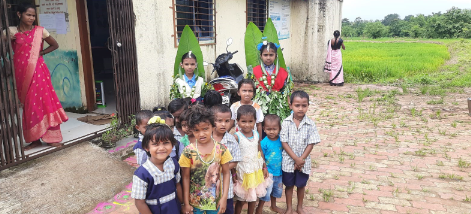
The path to eradicating child malnutrition in India is long and complex. But it’s a journey worth taking. There is a need for focused interventions to address child malnutrition in a comprehensive manner.
The actual price of child malnutrition in India is measured not just in economic terms but in the untapped potential of a generation. As we move forward, let us remember that the fight against malnutrition is not just a moral imperative but an investment in the nation’s future – an investment in human capital that will yield dividends for future generations.
Nutrition adequacy for children below 6 is the catalyst that can unleash our human capital. It will help them to attain:
Together, we can turn the tide against child malnutrition, unlocking the true potential of India’s youngest citizens.
In the vast tapestry of India’s socioeconomic landscape, the issue of child malnutrition stands out as a glaring stain. Behind the statistics lies a harsh reality: the toll of malnutrition extends far beyond the immediate health implications, permeating into the fabric of economic development and human potential. In this blog, we delve into the intertwined dynamics of economic outcomes and human asset loss stemming from child malnutrition in India, uncovering the actual price the nation pays.
Unpacking the Economic Ramifications
The economic repercussions of child malnutrition are multifaceted and profound. At a macroeconomic level, the loss in productivity due to stunted physical and cognitive development translates into a drag on overall economic growth. Malnourished children grow into adults with diminished earning capacity, perpetuating a cycle of poverty across generations. Moreover, healthcare costs associated with treating malnutrition have already stretched public resources, diverting funds from other critical sectors.
Human Asset Loss: A Price Too High
Beyond economics, the true tragedy of child malnutrition lies in the squandered human potential. Every malnourished child represents a lost opportunity for societal progress, a mind deprived of the nourishment needed to flourish. The long-term consequences extend beyond individual lives, reverberating through communities and hindering the nation’s ability to harness its demographic dividend.
Long-term Economic Benefits through Human Asset Development
Amidst the grim narrative, a glimmer of hope exists the promise of long-term economic benefits through human asset development. Investing in nutrition interventions targeting children during their crucial developmental years yields returns that extend far into the future. A well-nourished child grows into a healthier adult and unlocks their full cognitive potential, becoming a productive member of society capable of contributing to economic growth.
Towards a Holistic Approach
Addressing child malnutrition demands a holistic approach that transcends mere band-aid solutions. It requires concerted efforts across multiple fronts, from improving access to nutritious food and healthcare to enhancing maternal and child welfare services. Furthermore, tackling the underlying determinants of malnutrition, including poverty, inequality, and inadequate sanitation, is essential for sustainable progress.
Charting a Path Forward
The battle against child malnutrition looms large as a defining challenge in the complex tapestry of India’s development journey. By recognizing the intertwined dynamics of economic outcomes and human asset loss, we can galvanize collective action toward a future where every child can thrive. The actual price of child malnutrition in India extends beyond economic metrics—it is measured in the unrealized dreams and untapped potential of millions. As we strive towards a healthier, more prosperous nation, let us remember that investing in our children today is an investment in India’s tomorrow.
In many areas of India, a quiet yet severe issue persists – child malnutrition. Picture a village where the subtle signs of malnutrition in children, such as their thin arms and subdued energy, stand in contrast to the otherwise lively environment. This crisis goes beyond health; it serves as a foundation for various deep-seated social challenges within the community.

Multifaceted Nature: Malnutrition in Indian children is not a single-issue problem but has multiple dimensions.
Undernutrition: This is the most visible form of malnutrition, where children appear thin and weak due to an inadequate intake of calories and proteins.
Micronutrient Deficiencies: Often termed ‘hidden hunger’, this aspect involves a lack of essential vitamins and minerals, not immediately apparent but detrimental to health.
Micronutrient Deficiencies: Often termed ‘hidden hunger’, this aspect involves a lack of essential vitamins and minerals, not immediately apparent but detrimental to health.
Prevalence and Severity: Citing the World Health Organization, a significant number of Indian children are affected by malnutrition.
Stunted Growth: Many children experience small growth, a condition where they are shorter than the average for their age due to chronic malnutrition.
Wasting: This refers to children who are too thin for their height, indicating acute malnutrition.

The Ripple Effect of Malnutrition
Physical Impact – Stunted Growth: Malnutrition, especially in the crucial early years of life, can severely impact a child’s physical development. This is most visibly seen in stunted growth, where a child’s height does not meet the typical standards for their age. Stunting is not just a matter of short stature; it indicates a failure to achieve one’s genetic potential for growth due to chronic malnutrition. This physical underdevelopment is often accompanied by a weakened immune system, making children more susceptible to infections and diseases.
Cognitive Impact – Slowed Brain Development: Malnutrition affects brain development and cognitive functioning. A child’s brain undergoes rapid growth and development during the first few years of life. Essential nutrients like iron, iodine, and omega-3 fatty acids are crucial for this process. Malnutrition leads to deficiencies in these nutrients, resulting in delayed cognitive development, poor academic performance, and reduced intellectual capabilities. This cognitive impairment can have enduring effects, influencing a child’s ability to learn and succeed in school and, subsequently, in their professional life.
Beyond Underweight – A Holistic Issue: While being underweight is a common sign of malnutrition, the issue goes beyond just weight. It’s about the lack of nutrients vital for healthy growth and development. Even children who appear physically normal can suffer from ‘hidden hunger’, where they lack essential vitamins and minerals, leading to long-term health problems.
Intergenerational Cycle of Poverty: Malnutrition is both a cause and a consequence of poverty, creating a vicious cycle that can span generations. A malnourished mother is more likely to give birth to an undernourished child, who then grows up with the same disadvantages. This cycle perpetuates itself as malnourished children, especially girls, grow into undernourished mothers. This intergenerational transmission of poverty and malnutrition creates a trap that is hard to escape. The effects are not limited to the individual but impact the community and nation’s economic and social development.
Long-term Socioeconomic Consequences: Children who suffer from malnutrition are less likely to perform well in school, leading to lower educational attainment. This educational deficit translates into reduced employment opportunities and lower income potential in adulthood. As adults, they are at a higher risk of chronic diseases, adding to healthcare costs and reducing productivity. Thus, malnutrition in early childhood sets a trajectory that can lead to lifelong disadvantages and perpetuate socioeconomic inequalities.
Malnutrition and Social Inequities
Malnutrition is a mirror reflecting societal flaws – poverty, gender inequality, and educational disparities. It’s a vicious cycle: poverty leads to malnutrition, which in turn anchors individuals deeper into poverty. Stories from health workers and families attest to how deeply malnutrition is intertwined with social disadvantage.
Current Efforts and Challenges
Despite commendable initiatives by the Indian government and NGOs, tackling child malnutrition is a Herculean task. The challenges are many – from resource constraints to diverse geographic and cultural landscapes. Yet, these efforts are essential stepping stones toward a healthier future.
The Way Forward
What’s needed is a sustainable, community-driven approach. It’s about empowering local communities to take charge, improving education and awareness, and ensuring equitable access to resources. Each of us holds a piece of the puzzle – by contributing in our capacities, we can drive significant change.
Addressing malnutrition is not just about feeding a hungry child; it’s about nurturing a society where everyone has an equal opportunity to thrive. This issue demands more than fleeting attention; it requires a commitment to shake the foundations of these deep-rooted social evils. Let this be a call to action – not just to read and reflect but to participate actively in creating a world where no child’s potential is limited by their nutritional status.
Often perceived as the same, hunger and malnutrition are in fact distinct yet related entities.
Hunger refers to the physical sensation of needing food, a direct result of food scarcity impacting immediate well-being and survival.
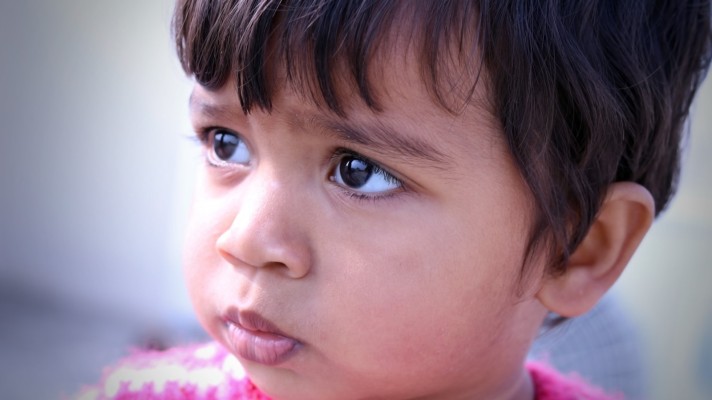
Malnutrition, on the other hand, is a more insidious condition stemming from a chronic lack of essential nutrients, regardless of food quantity. It leads to long-term health problems, cognitive impairment, and stunted growth in children.
While hunger is an urgent call for food, malnutrition is a complex, underlying crisis of quality nutrition.
Understanding Hunger & Child Malnutrition in Depth Hunger: The Immediate Lack of Food
Hunger is the immediate physical discomfort caused by a lack of food. This is a visible and acute problem, especially in poverty or areas of food scarcity. Hunger is an urgent call to action, prompting immediate relief efforts such as food distribution.
Causes:
Effects:
Solutions:
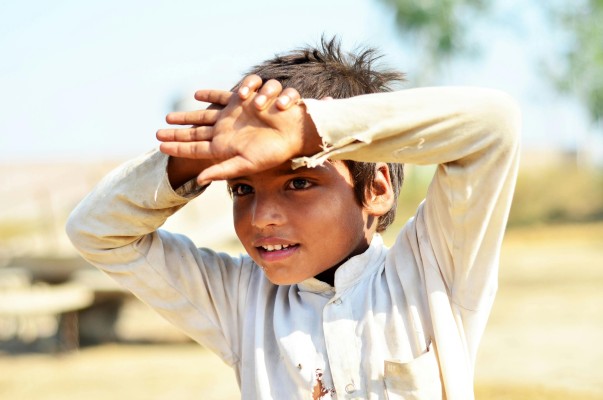
Malnutrition: A Complex Deficiency
Malnutrition, on the other hand, is a more complex and often hidden crisis. It refers to deficiencies, imbalances, or excesses in a person’s intake of energy and nutrients. Malnutrition encompasses undernutrition (wasting, stunting, and underweight), inadequate vitamins or minerals, and resulting diet-related noncommunicable diseases.
Causes:
Solutions:
Effects:
The Impact
While hunger is often visible, malnutrition is a silent epidemic. A child may receive enough to quell hunger yet still be malnourished. This dichotomy is where our understanding needs depth. The impact of these issues is profound. It’s not just about a child’s present hunger or current health; it’s about the future they can or cannot build due to these limitations.

The way forward is together
At ANNADA, we work to bridge the beneficiary’s nutrition gap while promoting health-seeking behaviors & good nutrition practices in their community. Corporate donors can create strategic value by aligning with our high-impact initiatives, benefitting both the nation and their CSR objectives.
We invite you to connect with us on [email protected].
Malnutrition in children is a pervasive issue that silently weaves its way into the very fabric of Indian society, influencing a multitude of social ills. While often overlooked, this problem has far-reaching consequences that extend beyond mere physical well-being. Here, we explore the profound link between childhood malnutrition and various social evils in India:
The Ripple Effect of Malnutrition
Child malnutrition in India goes beyond being a health issue; it has a far-reaching impact on society:
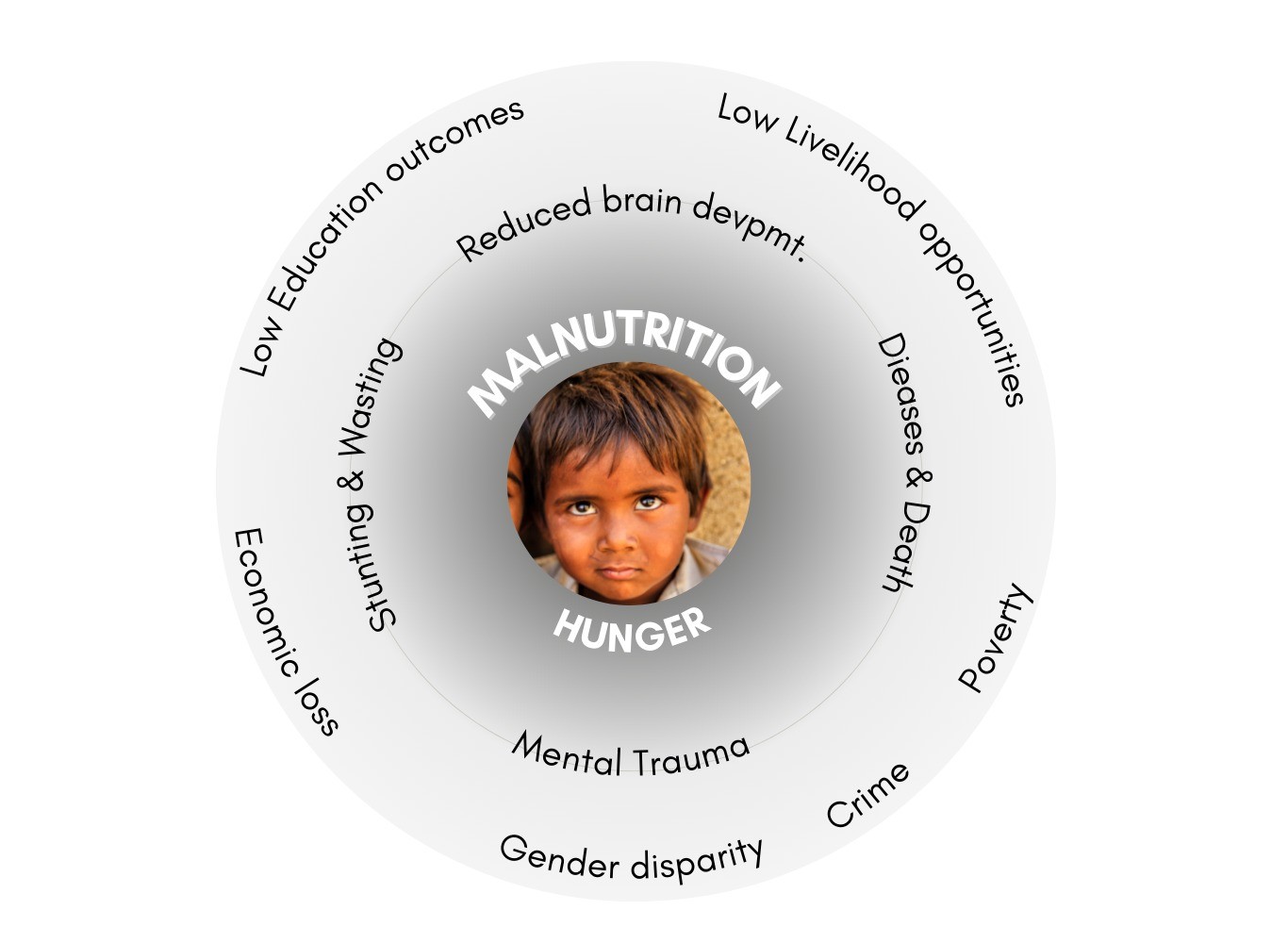
Physical Impact - Stunted Growth and Health Consequences:
Malnutrition impairs physical growth, leaving children shorter and weaker than they should be for their age. This physical underdevelopment isn’t just a cosmetic concern; it also compromises their immune systems, making them more susceptible to infections and illnesses. Additionally, malnourished children are more likely to experience long-term health issues, exacerbating the burden on healthcare systems.
Cognitive Impact - Slowed Brain Development:
Malnutrition affects brain development during a crucial period of a child’s life. Adequate nutrition is essential for the brain’s growth and function. When children lack the necessary nutrients, their cognitive development lags behind, resulting in delayed learning, lower academic performance, and reduced intellectual abilities. This cognitive deficit can have lasting effects, affecting a child’s ability to succeed in school and later in their professional life.
Beyond Underweight - A Holistic Issue:
While malnourished children may appear underweight, malnutrition isn’t solely about weight. It encompasses the absence of essential vitamins and minerals vital for overall health. Even children who appear physically normal can suffer from ‘hidden hunger,’ a condition where they lack crucial nutrients, potentially leading to long-term health problems.
Intergenerational Cycle of Poverty:
Malnutrition isn’t just a consequence of poverty; it’s also a cause. The relationship between malnutrition and poverty forms a cycle that persists across generations. A malnourished mother is more likely to give birth to an undernourished child, continuing the cycle. This intergenerational transmission of both poverty and malnutrition creates a trap that’s difficult to escape. Its effects aren’t confined to individuals; they ripple through communities, affecting the economic and social development of the nation.

Low Average Peak Productivity and Loss of Human Capital:
Malnutrition serves as a mirror reflecting broader societal issues:
Child malnutrition significantly contributes to social inequities. Malnourished children often face hindered educational and career prospects, perpetuating poverty cycles. This issue disproportionately affects marginalized communities, reinforcing existing disparities. Consequently, malnutrition not only impacts individual health but also perpetuates broader societal inequality.
The Way Forward
Addressing child malnutrition in India requires a holistic, community-driven approach. This involves empowering local communities to take charge of their own nutrition, raising awareness about the importance of nutrition, and ensuring equitable access to resources. Each of us can play a role in driving positive change. It’s about creating a world where no child’s potential is limited by their nutritional status, where opportunities are equal, and where communities thrive.
This will close in 0 seconds
This will close in 0 seconds